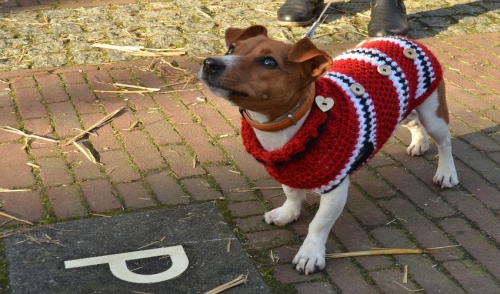{article.name}
Winter Clothes for Dogs

- Share this:
- Share on Facebook
- Pin on Pinterest
- Tweet on Twitter
Dogs are naturally equipped with fur coats, so are winter clothes really necessary for your pet? The right coats, sweaters, boots and other winter clothes for dogs can be more than just a fashion statement or stylish accessories.
How Winter Clothes Help Your Dog
Different dogs have different needs, and some dogs can greatly benefit from the right winter clothes. Not all breeds are adapted to bitter cold, deep snow or slippery ice, and any pregnant dogs, dogs with health issues or very young or old dogs may also benefit from the proper winter gear.
Depending on the style and type of gear, winter clothes can provide…
- Warmth: Winter coats or sweaters for dogs will help keep your pet's body heat contained, helping them stay warmer and more comfortable. The clothes are also a barrier against moisture or biting wind.
- Chemical Barriers: Chemicals such as salts, ice melts and antifreeze compounds may be used on roads and sidewalks in the winter. These items are toxic to pets, and if they are on your dog's paws and the dog licks its paws, it could become sick. The right winter boots or socks can minimize this risk.
- Traction: Winter boots, booties and socks for dogs provide good traction on slippery, icy surfaces. This can help prevent injuries from ice shards or painful slip-and-fall accidents, especially if the dog is excitable or running.
- Visibility: The glare from ice and snow can make dogs harder to see, but if your dog is wearing a good winter coat or other suitable outdoor gear, they can be more visible. This will help keep them safer anytime they are outdoors in winter.
The Best Winter Clothes for Canines
There are a wide variety of winter gear options for dogs. Not all dogs will need every type of gear, but the most popular options include…
- Coats and Sweaters: These items cover a dog's back, chest and sides, often with a strap around the belly to keep the coat secure. The legs may also be slightly covered with short sleeves. Simple knit gear is available, as well as quilted or down-filled varieties for even more warmth. Coats and sweaters come in a wide variety of styles and colors, and may even have hoods.
- Boots, Socks and Booties: Winter footwear for dogs covers the foot and ankle, with an adjustable strap around the ankle to keep each boot secure. Rubber grips or tread on the bottom provides better footing, and the height of boots, booties and socks will vary. Many types of winter dog boots are also waterproof to keep paws comfortably dry.
- Raincoats: Not all areas receive copious winter snowfall, but if your dog will be exposed to chilling rain or sleet, a raincoat can be helpful. These coats are typically made of vinyl or similar water-repellant materials, and are designed a bit longer with draped edges to shed water and keep your pet dry.
- Pajamas: Some pets always seem cold indoors, particularly if you lower the thermostat at night, and pet pajamas can be the answer. These clothes are similar to coats but usually have sleeves for all four legs to be sure the pajamas stay in place, though the belly isn't usually covered so the dog can still pee as needed. Lighter materials such as fleece are typical for pajamas.
- Holiday Clothes: Holiday-themed gear is popular for Christmas and other winter holidays. Dog costumes may include Santa or Mrs. Claus coats and hats, reindeer antlers, ugly sweaters, elf costumes or holiday-themed bows and colors. While these clothes aren't necessarily as practical as other winter options, they can still be fun accessories.
Not all dogs will be equally comfortable wearing winter clothes, and it takes time, patience and training to teach your dog how to wear the gear without being nervous or upset. As they get accustomed to the clothing, however, they will appreciate the better comfort and you will appreciate knowing your dog is protected against winter weather.

Comments